Right?
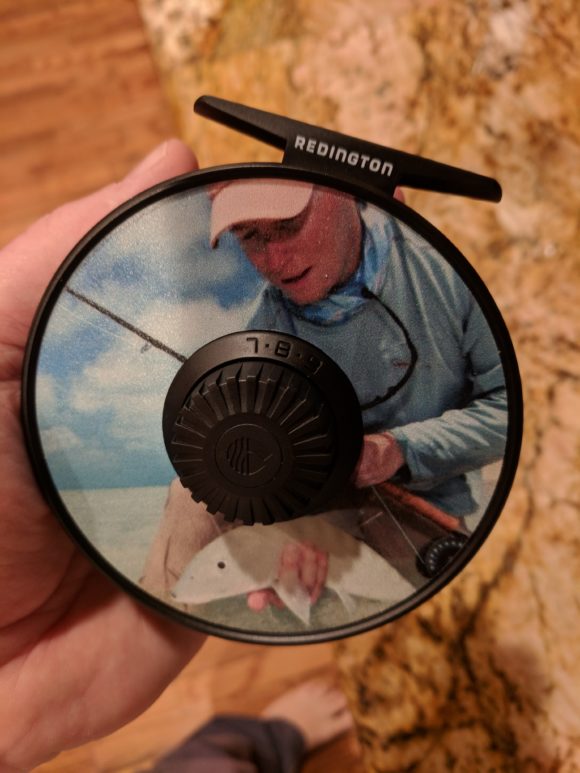
Introducing the new Redington I.D. reel. This is probably going to go on my striper rig.
Thanks Redington!

Right?

Introducing the new Redington I.D. reel. This is probably going to go on my striper rig.
Thanks Redington!
I got to take the Sage Evoke 10 reel along with me to Long Island and I did so in the hopes of finding one of the few tarpon still there. I found the tarpon. They weren’t interested.
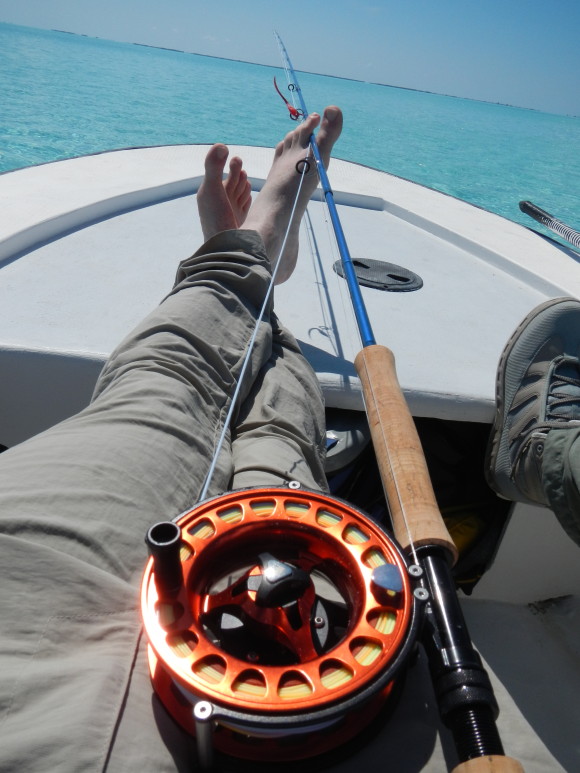
A good place to be.
I did get to try the reel out on a few fish, however. I found some cuda and trolled up jacks to pull some line. Here are my thoughts on the reel. First… it is massive. I’d take it as a weapon in a fight. Everything about this reel screams “SOLID!” It is not going to warp on a big fish. You can drop it without denting anything (I’d watch your toes though).
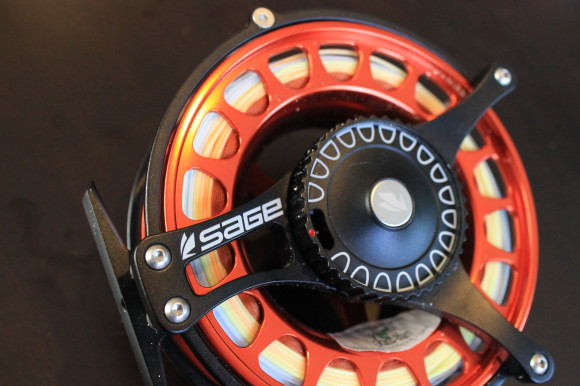
Beefy
It is the opposite direction from the “go lighter” movement. It is not a reel for blind casting 7 hours a day. It is a big game reel and purpose built. You don’t blind cast for big game for hours on end. You hunt the thing, stalk it, track it down and then make your shot. This is the elephant gun (but really, don’t shoot elephants) of reels. The reel itself has a clicking drag so you can be precise about your drag setting. It isn’t going to slip on you. I believe this reel is also not capable of switching from one hand to the other. You buy the one that works for you. Pretty rare for someone to change which hand they reel with. I have zero problems with that. I can say I think it was a beast of a reel, in a good way. I just wish I had convinced one of those tarpon to play.
I recently heard from Abel. I had met a couple guys at the Pleasanton show and they followed up, wondering if I’d be interested in getting my hands on an Abel for my upcoming Grand Bahama trip.
Sure.
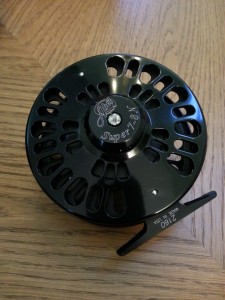
The Super 7/8n
I have never fished an Abel. I know people who love them (like, really love them). They are certainly well established as a premier reel maker. As you may know, I think the reel is pretty important. So, it seemed like a good idea to actually fish one. To be clear, this is a loaner. They didn’t give it to me, they loaned it to me, and after I fish it, I’m going to pay the postage to send it back. The reel is more expensive than I’m likely (or known) to go for. The retail price is a cool $700… not a budget guy’s kind of value buy.
First impressions.
The reel is solid. One thing I noticed right away was how narrow it was (0.85″). I asked the Facebook page about this. Eddie says this is good… he says “Benefit, It helps keep the line from piling up and helps with the speed of retrieve.” That’s what they say at the factory too. The “n” in Super 7/8n stands for “narrow.” The idea is that the line piles up faster as you reel.
Out of the box the Super 7/8n is Right Hand retrieve. I know some folks are RH retrieve, but do you? I don’t. I am LH retrieve, which seems more common to me. So, I had to make the switch. It was a little comical looking at the directions, as there were a lot of them. After getting some good stick from the guys on Facebook for complaining about this, I went ahead and made the switch. There are a few steps involved, but it is doable. Took about 7 minutes… not bad.
I got to talk on the phone to the folks at Abel and they said that up to their Super 6, they ship the reels as LH retrieve, but they find most of their buyers do RH retrieve when it comes to the Super 7/8 or higher. Turns out if you are a trout guy, or coming from a trout background, you reel with your off hand. If you are born into the salt, you reel with your dominant hand. Clearly, a lot of my readers are like me… coming from the low-sodium stuff, as the tally on Facebook was 27 to 5, for non-dominant hand reeling.
So, now the reel is ready. I have the backing on and I’m just waiting for the RIO Bonefish Quickshooter line that is on its way. I’m looking forward to taking the Bentley of fly reels out on the waters of Grand Bahama.
Looking forward to hearing this reel scream.
I had a birthday recently. I’m still waiting for your gifts to arrive, any tracking numbers to share?
Anyway, I had some gift certs to that little on-line marketplace called Amazon. I get a lot of gear on loan for trips, so I thought it might be interesting to know what I spend my own money on, and why.

The newest member of the family
First, I would normally try to buy from a shop. Getting the Amazon gift certs ruled that out. There are some shops around here, but they don’t sell through Amazon, so that was not where I was going to drop my money. I had $300 to spend and on Amazon there really weren’t that many choices for saltwater appropriate reels.
My options were limited. The reel options were Hatch, Galvan, Ross, Hardy and Lamson, for the most part. When you look at the right size at the right price, the pool was reduced further. Would I like a Hatch or an F1 from Ross or a Nautilus? Yes. Would I have bought one of those if they were $300? Yes. I would also buy a Tibor if it was $300, which they just aren’t. So, confined by price, I looked for value.
I have to say that I know Aaron Adams and Davin Ebanks haves been fans of Lamsons and that did come into play.
I also put a Lamson through reel testing and it passed with flying colors.
It feels a bit like a modern consumer tale. It was vital I was not restricted by where or how I could buy the product. Additionally, I was swayed much more by what I saw through my social network and through non-aligned social media than I was swayed by commercials, ads or any of the industry hype I have a habit of drinking like so much Kool-Aid.
So, that’s the story of my new Lamson Velocity 3.5. This reel is intended to take the place of my TFO 375, which has frozen up, corroded from saltwater exposure and is no longer fit for service. This will be my 7-8 weight bonefishing reel of choice (within my stable of options), until and unless it makes me regret that decision.
A cool post over at the Fiberglass Manifesto involves a tour of the Ross factory as an F1 reel gets assembled.
The whole reel testing thing has been happening slower than the pace of financial reform in congress. Been hard to find the time, honestly, with all the… um… interesting things going on in my life.
I got the Vanquish out today and ran it through the first 20 high speed pulls and put it through a little saltwater soak. Sounds like a day at the spa.
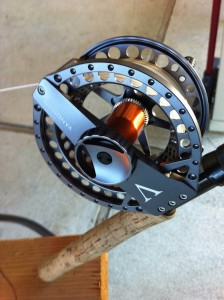
Lamson Vanquish
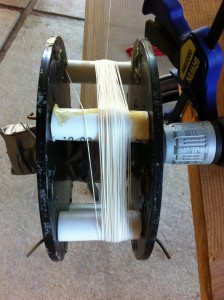

A little saltwater soak

First 20 pulls, in the bag. Now, it needs to sit for a couple days, dry out with that nice saltwater crust. Then… 20 more pulls. Then the sand. Then more pulls.
Stick with me here while I try to get the whole testing regime back on line.
Have you ever wondered how the different reels really stack up?
Sure, I’ve read field testing reports, but that is a very uneven way to really test reels. Even if you had a great day of fishing, how much of a workout did the reel really get?
What happens when you get the reel wet or drop it in the sand? Will it still handle the big pulls after you drop it off the table after your 7th Kalik? All reels work great on the first pull. How about the 100th?
Well… I figure I’m going to find out and I’m going to tell you all how it goes.
I’ve begun soliciting reels to undergo a battery of tests, all off the water, and I’m going to create a page for those tests and their results.
I’m still working out the kinks, but the initial response from reel makers has been really good. So far I have positive responses from Sage, Redington (they pulled out, which is a bummer), Orvis, Nautilus, Able, Allen, Tibor, Okuma and Loop (add Ross to the mix) with a flood of other emails and phone calls in to just about every reel maker I could think of with a saltwater reel suitable for an 8 wt. (Hatch Reels became the first to decline today… bummer)
I have zero qualification to be doing this. I’m just curious and I have this blog as a platform so I’m going for it.
None of the reels will be kept by yours truly, sad to say. I imagined it would be easier to get folks to send me reels if they didn’t know I was just trying to score free gear it didn’t look like I was just trying to score a free gear.
I’m putting the finishing touches on exactly how I’m going to carry these tests out so when the first one gets here I’ll be ready to roll. I put together the set-up for doing the mechanical pulls and this is the first trial run with my newly acquired Lamson Lightspeed 4 (which is really mine). I think this is going to work.
In the immortal words of Eric Cantona… “Watch this space”
My wife was quick to point out that not only am I not keeping any of the reels… I won’t be making any money by doing all of this work and I’ll get to foot the shipping to send all the gear back. Such is life. I’m still excited
Yeah… I’m going to enjoy this…
http://www.youtube.com/watch?v=1JEYM3Lpbg4?rel=0
I should note, for the reel makers – mechanical pulls with the drill will be done in the range you might expect from a big bone or big Jack… 100-200 feet at a time (I won’t run the drag for 10 minutes straight or anything like that).
This is helpful… a lot of knowledge dropped about drag systems over at MidCurrent.
When manufacturers proclaim the virtues of their drag systems in advertisements and catalogs, they toss around terms such as “startup inertia,” and “cork to Rulon,” and “fully sealed,” often without fully explaining what these things are and why they are beneficial to anglers. If you stop to think about it, these terms raise a lot of questions about how reels are built and how they work. I set out to address these questions and more. What I learned may help you the next time you peer into that glass case at the fly shop — you’ll have a better grip on why objects with such a simple purpose vary so much in complexity … and price.
If you have, oh, $24,000 or $25,000 and some free time, I’d like you to spend a few months testing reels. Sound good? Great. Here’s what I’m looking for. The world of gear is… well… full… it is full of makers and brands and marketing hype and really, really short on objective comparisons. If you were to take all the bonefish-ready reels out there right now, I count 69, the price-tag would come to $23,264 (before taxes). There are reels under $50 and there are reels over $800 and the only thing you have to guide you in purchasing is name-recognition and brand reputation… which, in my mind comes down to marketing. What kind of performance do you actually get from the $800 reel? What kind of risk are you running with that $150 reel?
I wish Consumer Reports would pick this up and run with it, but I doubt that will happen. I wish Fly Fishing in Salt Waters or Fly Fisherman would do this, but that’s equally unlikely.
Here are some tests to put these reels through…
I want to see this done. I do wonder if gear makers would actually want their gear tested in some kind of objective way. What if the $200 reel and the $700 reel are identical in terms of performance and durability? Maybe the gap is huge. Maybe it would be really clear. Maybe the winners would be clear and the cork vs. carbon fiber debate could be settled. Of course, Middle East peace could break out too.
Field testing is just never going to do it. A week or a month or a season with a reel doesn’t really tell you anything because you have no real comparison… what you did in that week or month or year didn’t happen to the other 68… you didn’t put them through the same things.
So… if you find an extra, oh, $25K sitting around… let me know.
I have the reels I need to do the jobs I ask of them for about 95% of my angling. Still, most of what little news emerges from the fly fishing industry is about gear… so… here’s some recent news.
Abel has revamped their workhorse bonefishing/saltwater reel, the Super 7/8 and it is now the Super 7/8N.
Now… I’ve never fished an Abel that I’m aware of. I know there are folks that really like these reels and no doubt these cork-drag demons are tough. I just can’t get past the price though… $700 for a Super N in a large arbor. Compare that to the Nautilus NV ($540), the Galvan Torque ($320), Ovis’s Mirage ($425), the Opti from Loop ($560)… the only thing that is up there as company is the Tibor QC ($780 or so).
From their press release…
What do you call a fly reel that’s lighter, faster, has greater backing capacity than its predecessors and was precision engineered like something on a space mission? Answer: The Abel Super 7/8N for 2011, which essentially replaces the two longtime workhorse Super 7 and Super 8 reels.
Not only is it space-aged, but the price is astronomical as well (see the pun there? did you see it?). I’m going to go out on a limb and say I don’t need my reels to go into space or to be designed as if they were. Could probably knock a couple hundred off the price if they didn’t field test on the space station.
Abel is content to keep putting out products at the very, very, very top of the price range and it seems they have enough buyers to make the economics work. Between $700 reels and $275 belt buckles (yes… belt buckles), Abel is doing nothing to support the strained relationship between Cheap and Bonefishing.

One of these won’t be holding up my jeans from Target.
Abel… your stuff is pretty. The sticker shock is intense.